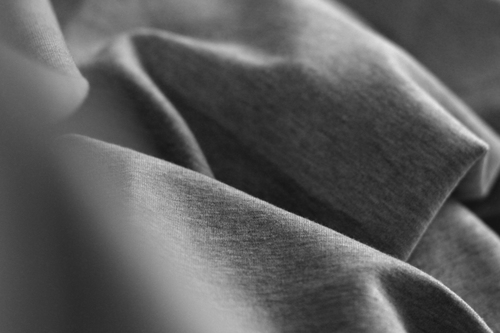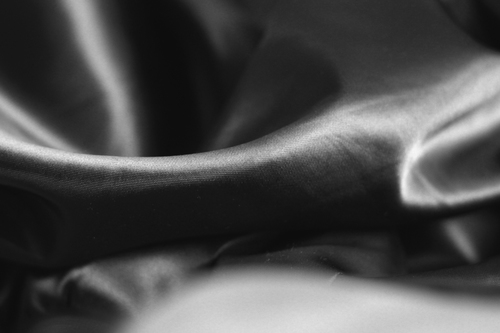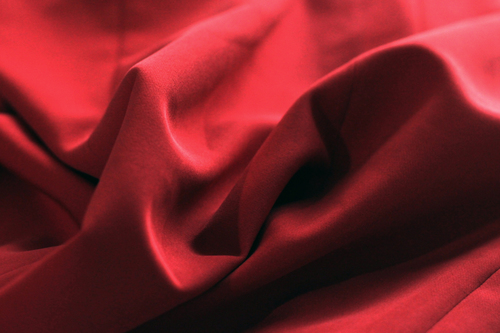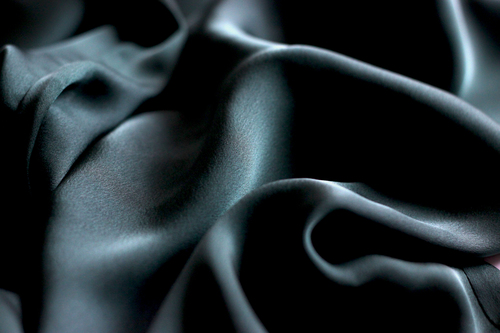“THE FABRIC OF EXISTENCE WEAVES ITSELF WHOLE.” – CHARLES IVES –

CHIFFON
Chiffon is a sheer fabric of silk, nylon, or rayon in plain weave. It can be difficult to work with because of its light and slippery texture. Most commonly used in evening wear, especially as an overlay, for giving an elegant and floating appearance to the gown. It is also a popular fabric used in blouses, ribbons, scarves and lingerie.

COTTON
Cotton is known to be comfortable and soft, good absorbency, color retention, prints well, good strength and drapes well. It can also be made from recycled cotton during the spinning, weaving, or cutting process. It can either be used in knitted or woven fabrics, as it can be blended with elastane for apparel such as stretch jeans.

DENIM
It is commonly known that denim is the fabric of our jeans. But from a construction viewpoint, denim is a twill fabric. A sturdy, possibly coarser twill. When it comes to denim shirting, it is a much softer, lighter version of the fabric than what your jeans are made of. Depending on the weight, denims can be used for shirtings, jeans, dresses and jackets.

GEORGETTE
Georgette is a sheer, lightweight, dull-finished crêpe fabric. It is a textile traditionally made from silk and sometimes polyester. It is distinct for its crinkly crepe-light texture, which feels slightly rough but gives the fabric a flowing look. The threads are highly twisted, causing them to crinkle as they relax. It also drapes very well.

LACE
Lace is delicate, classic, and always elegant. It is a decorative and open work fabric consisting of a network of yarns formed into intricate designs. Lace may be hand or machine made, and intricate pattern scan be produced by either technique. Use lace for creating romantic tops, overlays on dresses and skirts, bridal veils and more.

LINEN
A natural plant fiber, linen fibers are stronger and more lustrous than cotton. Linen tends to get wrinkled easily, but that is the nature of the fabric. Ideal for the summer. Depending on the weight, it’s appropriate for anything from heirloom sewing and blouses to slacks and jackets. They are valued for their exceptional coolness in hot weather.

NEOPRENE
Neoprene is a synthetic rubber produced by polymerization of chloroprene and used in weather-resistant products, adhesives, shoe soles, sportswear, paints, and rocket fuels. It is resistant to oil and ageing and is used in waterproof products, such as diving suits, paints, and adhesives. It’s usually thick and stretchable.

NYLON
Fabric made from nylon fibers can be used for blouses, dresses, foundation garments, lingerie, swimwear, underwear, raincoats, ski apparel, windbreakers, and cycle wear. Most items made from nylon can be machine washed and tumble dried at low temperatures. Use warm water and add a fabric softener to the final rinse cycle.

POLYESTER
Polyester fabrics and fibers are extremely strong. They are very durable: stretching and shrinking and wrinkle resistant. Commonly used on most garments and usually blended with other fabrics such as elastane, spandex and cotton. It also retains its shape and hence is good for making outdoor clothing for harsh climates.

SATIN
Satin is a sleek and glossy fabric, and the fibers commonly woven to create satin are silk, cotton and also synthetic materials like polyester, allowing it to be less expensive. Satin is used in apparel such as baseball jackets, athletic shorts, lingeries, nightgowns, blouses, and evening gowns, but also in some men’s boxer shorts, shirts and neckties

SLUB
Slub jersey has all the comfort and versatility of a knit. The small thick spot in the twist of a yarn contributes texture to the surface of a fabric. Such spots may be deliberately added for variety or a natural variation in a yarn. Commonly used for t-shirts and known for its comfort. Some slubs may appear a little sheer and usually lightweight.

FRENCH TERRY
French Terry has a looped reverse and a knit-like face. It also has fish scale loop back. French Terry can be used for apparel like loungewear and activewear in cooler climates. In the recent years, designers have been incorporating this fabric into their designs. Due to the weight, it is able to give structure and shape to the garments.

CROCHET
Crochet is a process of creating fabric by interlocking loops of yarn, thread, or strands of other materials using a crochet hook. The name is taken from the French word “crochet”, meaning small hook. Commonly used for light, summer sweaters, other kinds of tops, shorts, dresses, skirts and rompers accompanied with lining.

DOBBY
A decorative weave, characterized by small geometric patterns and extra texture in the cloth. Dobby (similar to Jacquard, although technically different) varies widely. The warp and weft threads may be the same colour or different. Satin threads are particularly effective in this kind of weave as their texture will highlight the pattern.

TERRY CLOTH
A little different from French Terry, terrycloth is a fabric with loops that can absorb large amounts of water. It can be manufactured by weaving or knitting. Soft and cozy, this absorbent fabric is perfect for making towels and robes. Surprisingly versatile, terrycloth can even be used for apparel like loungewear, streetwear, casualwear and activewear.

CALICO
Calico is a plain-woven textile made from unbleached, often not fully processed, cotton. It is less coarse and not as thick as compared to canvas or denim. The equal weft and warp plain weave fabric is in white or cream cotton. It is commonly used for toile to construct sample pieces before the actual garment is sent for bulk production.

GINGHAM
Gingham is a medium weight, yarn-dyed, plain weave cotton fabric usually with a plaid or micro check pattern. It is made of carded, medium or fine yarns, where the colouring is on the warp yarns and always along the grain (weft). Gingham has no right or wrong side with respect to colour. End-uses include shirts, dresses, shorts and handkerchiefs.

PIQUE
Piqué refers to a weaving style, normally used with cotton yarn, which is characterized by raised parallel cords or fine ribbing. It holds more starch than plain fabric, so produces a stiffer shirt front. A knit fabric with a similar texture is used in polo shirts. Piques may be constructed in patterns such as cord, waffle, honeycomb and birdseye piques.

ORGANZA
Organza is a crisp, sheer, lightweight plain weave fabric, with a medium to high yarn count, made of silk, rayon, nylon, or polyester. It is transparent and woven with very fine, tightly twisted yarns in an open, plain weave. Silk is more expensive than polyester organza but is lighter in actual weight and is much easier to manipulate.

SEERSUCKER
Seersucker is a fabric with a woven pucker and traditionally cotton, but can be polyester. Suitable for shirts, casual slacks, shorts and children’s clothing. In the recent years, it has been a popular choice in the menswear tailoring, especially for the spring & summer vibes. End uses include jackets, pants & casual suits.

CORDUROY
Corduroy is a heavyweight durable textile composed of twisted fibers similar to twill. Modern corduroy is most usually composed of tufted cords. It is a ridged form of velvet and looks as if it is made from multiple cords laid parallel to each other and then stitched together. Usually found in the construction of trousers, jackets and shirts.

WOOL
Wool is the textile fiber obtained from sheep and certain other animals. It is naturally stain and wrinkle-resistant. There are many different types of wool; pure and blended. It is usually ideal for formal suits for men but other types of wool, usually the heavier weight are commonly used for overcoats, jackets and pants for both women and men.

OXFORD
Oxford is a type of woven dress shirt fabric, a particular casual-to-formal cloth in Oxford shirts. The Oxford weave has a basketweave structure and a lustrous aspect making it a popular fabric for a dress shirt. Some other types are the plain, Pinpoint and the more formal Royal Oxfords. They are versatile options for the men.

FELT
Felt is a non-woven fabric made from wool, hair, or fur, and sometimes in combination with certain manufactured fibers, where the fibers are locked together in a process utilizing heat, moisture, and pressure to form a compact material. While some types of felt are very soft, some are tough enough to form construction materials.
As we have access to one of the largest fabric markets in China, these list of fabrics are by no means exhaustive and we can source for fabrics of your choice. Please kindly contact us if the fabric you are looking for is not on this list.
